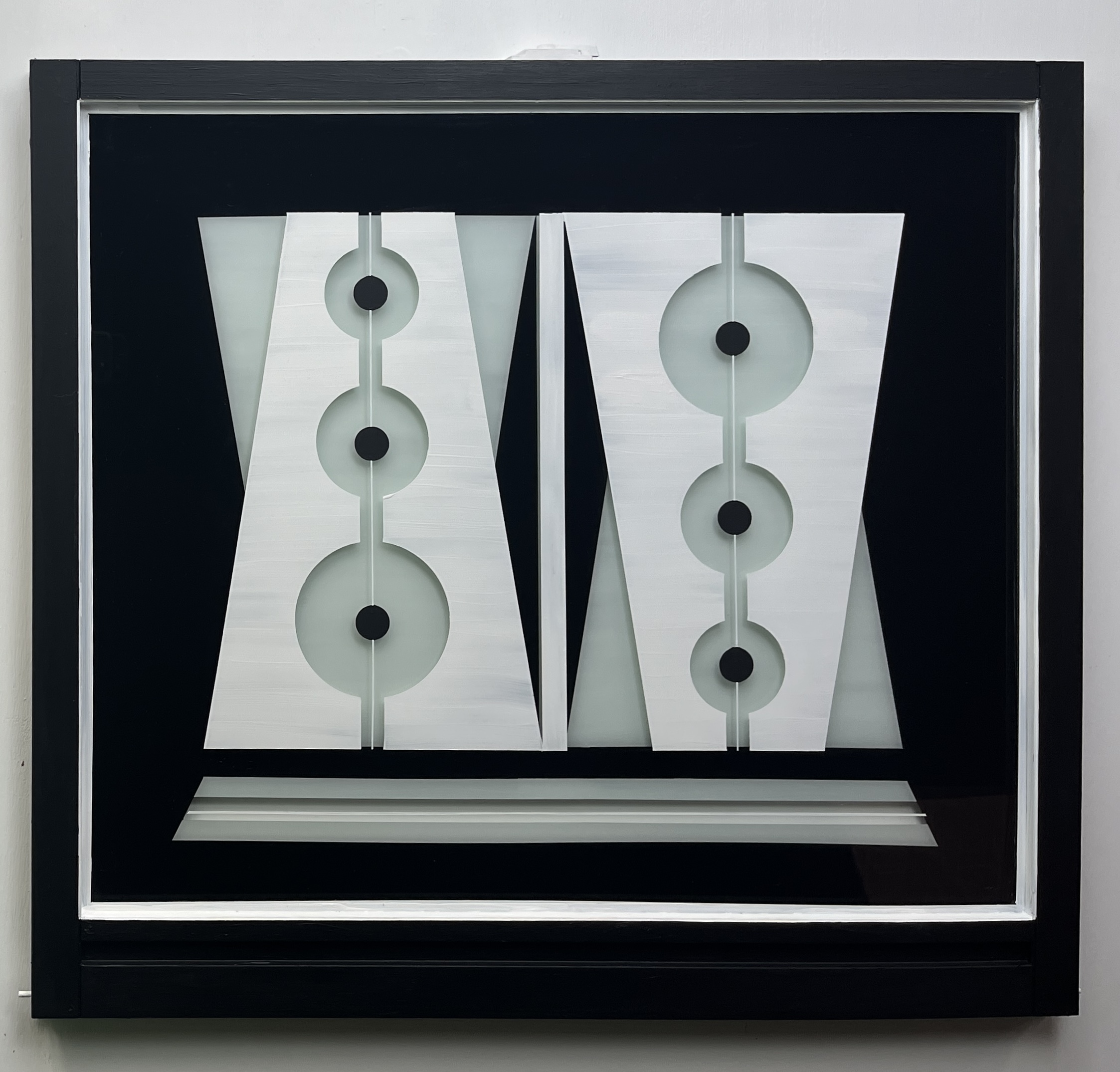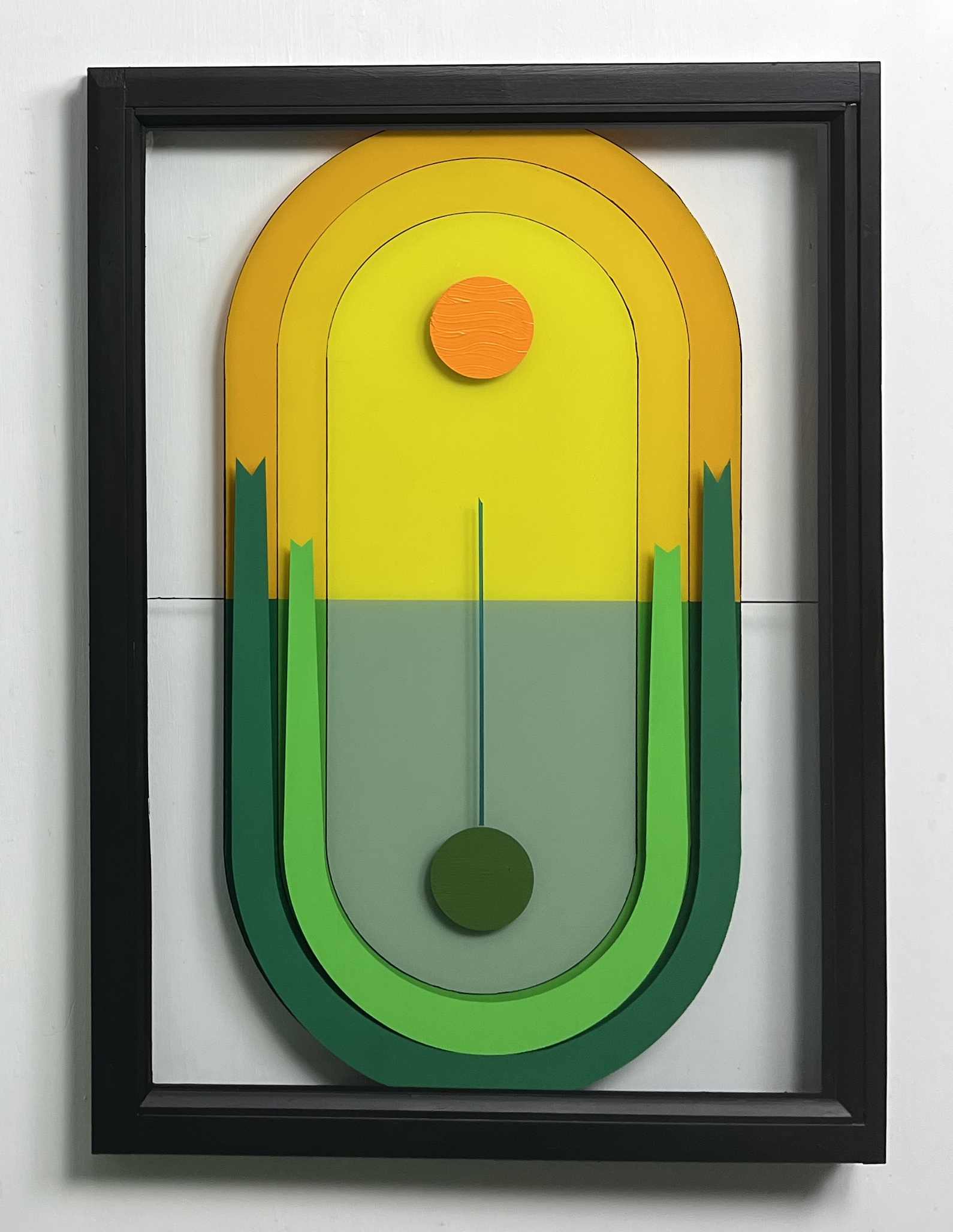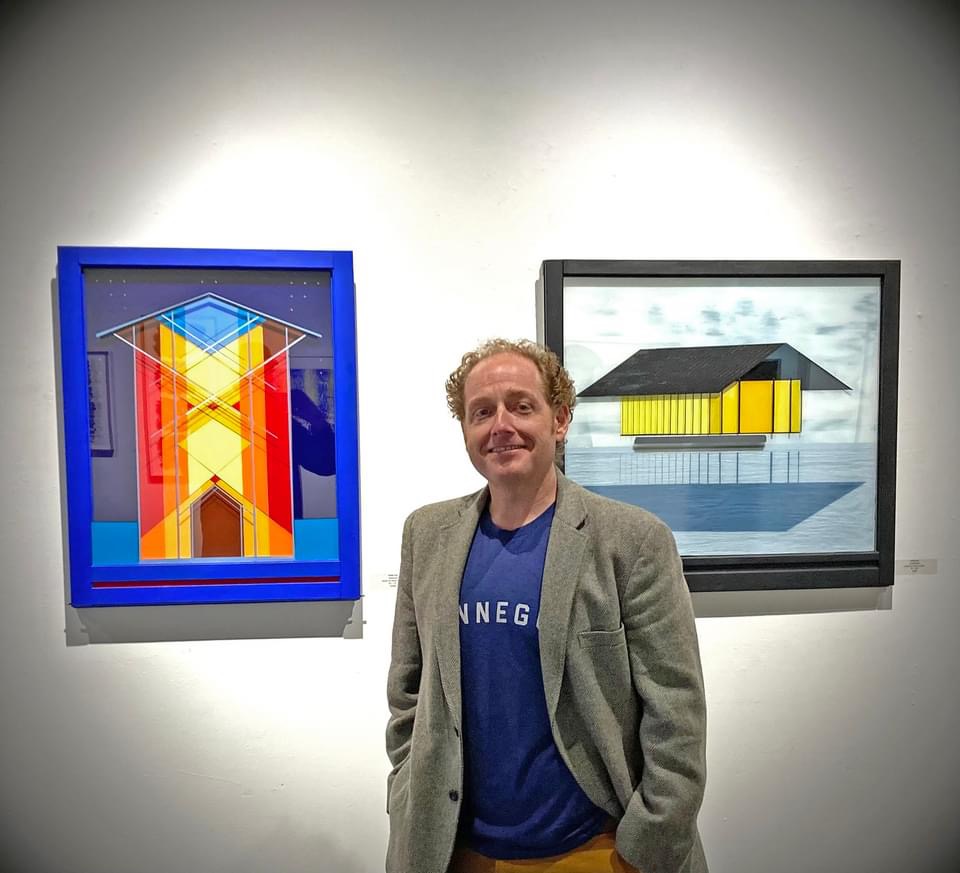Alright – so today we’ve got the honor of introducing you to Eddie Hall. We think you’ll enjoy our conversation, we’ve shared it below.
Alright, Eddie thanks for taking the time to share your stories and insights with us today. Learning the craft is often a unique journey from every creative – we’d love to hear about your journey and if knowing what you know now, you would have done anything differently to speed up the learning process.
I am self-taught as an artist. The first time I really picked up a paint brush was when I was nearly forty, just playing around with some leftover paints someone else had left laying around. I think I first felt then what keeps bringing me back to the artistic process, that state where you don’t really care about anything other than expressing the idea you have in your head.
My first work didn’t resemble what I do now in any way, I was doing automatic drawing experiments (something I picked up from an art book of my daughter’s who was about eight at the time) and played a lot with blending colors and textures which I don’t really do now – maybe some of it is seeping back in these days. Through that process, eventually I found my love for painting on glass – particularly painting old windows.
I have probably painted well over eighty windows at this point and I have found I’m learning at every point of the process. Like a lot of artists out there, I don’t love every work I make – but making each one of them is part of working out ideas (good and bad) and getting to what works, what I really love. I experiment a lot while I work, so I feel like I’m learning something new – some new technique, some new brush stroke or concept every time I’m working – so honestly, I really think the process of just starting, creating your own work, and finding your voice is the best way to learn.
Aside from that, I have found that improving my craft is really about noticing what I enjoy about the work of others and noticing things in the world that draw me in. Most spare moments I have, I’ll be at a local gallery or museum taking in work to see what I appreciate and what I can incorporate into my own works. I’ve gotten ideas from so many works that don’t resemble what I do at all. Recently, I was completely stuck on a piece – to the point where I was going to completely scrape it down – and I saw a wall hanging over the trash can at a local deli. The shapes in it just clicked with me – I went back to the easel and it really started to work. So I would encourage anyone to get out there and really see as much work and notice as much in the world as you can.
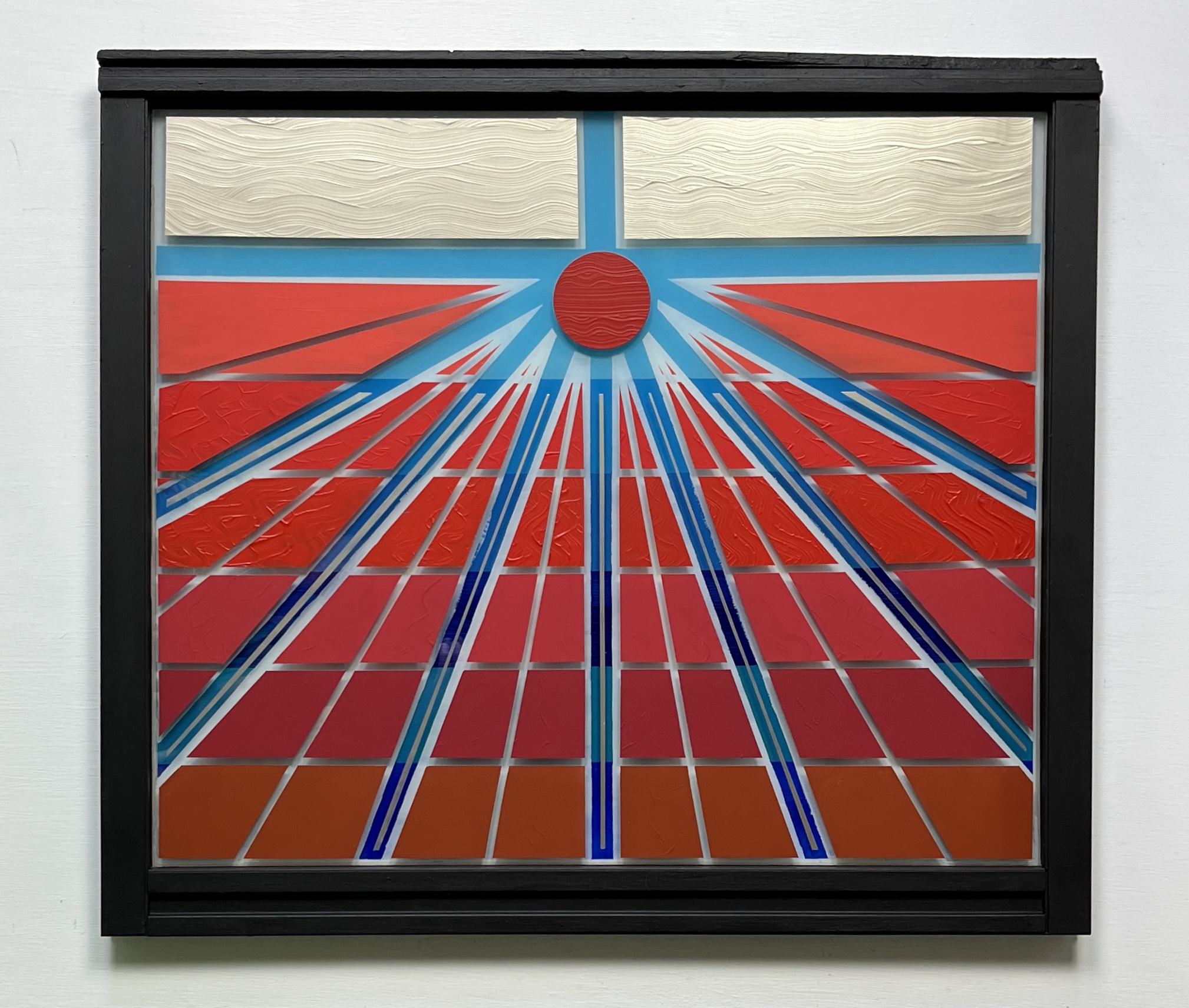
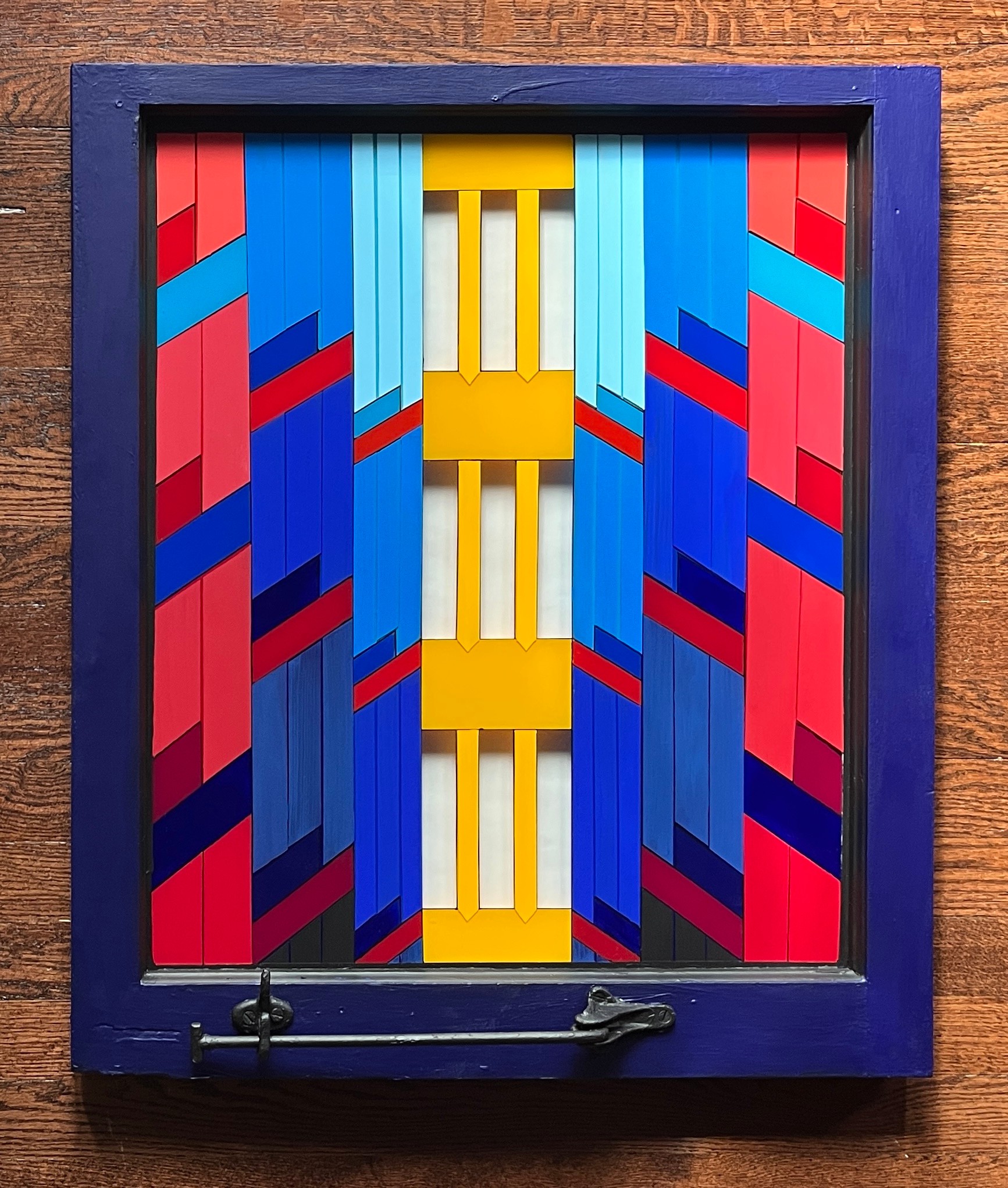
Eddie, love having you share your insights with us. Before we ask you more questions, maybe you can take a moment to introduce yourself to our readers who might have missed our earlier conversations?
My name is Eddie Hall and I am an abstract artist that creates works on reclaimed house windows. I have exhibited my work throughout New England, primarily in Connecticut – I’ve been included in shows at the New Britain Museum of American Art and Mattatuck Museum, for example – and have also done shows in New York, Boston, and Newport in the last year. I even have had a piece on display for the last few years at the Connecticut State Capitol building.
What I do is very much a niche, I’m surprised I don’t see more people doing it, but I started painting on windows a few years ago when I decided to redo an old window that had been in my kitchen for over a decade intentionally mimicking Frank Lloyd Wright. It just took off from there and I like that I’m essentially taking something that would end up in a landfill and using it as a canvas.
At first, I found that painting on the reverse of glass really accentuated the colors in my work, as you’re seeing essentially the thickest layer of what would be on canvas under a glossy surface. After working with it for a while, I realized painting on the front of the glass would provide a matte surface where I could play with that against the glassy surface and the reverse. Now I find myself experimenting wherever I can with different techniques and mediums – seeing where I can take the presentation of these works on windows. I’m sure my work involves a lot more tape and razor work than most other artists.
My path to becoming an artist is definitely not a traditional one. I went to school for criminology, worked at a record label in Los Angeles while going to law school, then moved to Connecticut and established myself as a corporate attorney. I am the Chief Operating Officer of a part of a large corporation – we audit big companies for unclaimed property owed to states. On top of this full time job, I am a full time dad half of the time to two great children. Not a lot of this matches up with having time for an arts career – but I am passionate about both creating artwork and supporting the arts so I make the time wherever I can.
I do consider myself successful as an artist at this point. It may sound self-involved, but a big part of this is because I truly love some of the works I’ve been able to create. I make things for myself, because I want to express these concepts or images and its really surprising to me when they actually do work out. I am truly grateful for my other career because it allows me the freedom to count my success in that way. On top of completing some quality works, I have been surprised by any other success I’ve had as an artist – selection by jurors for competitive shows, selling work, and even just comments from people appreciating what I do. Honestly, I’m still surprised at times that anyone other than me likes my work.
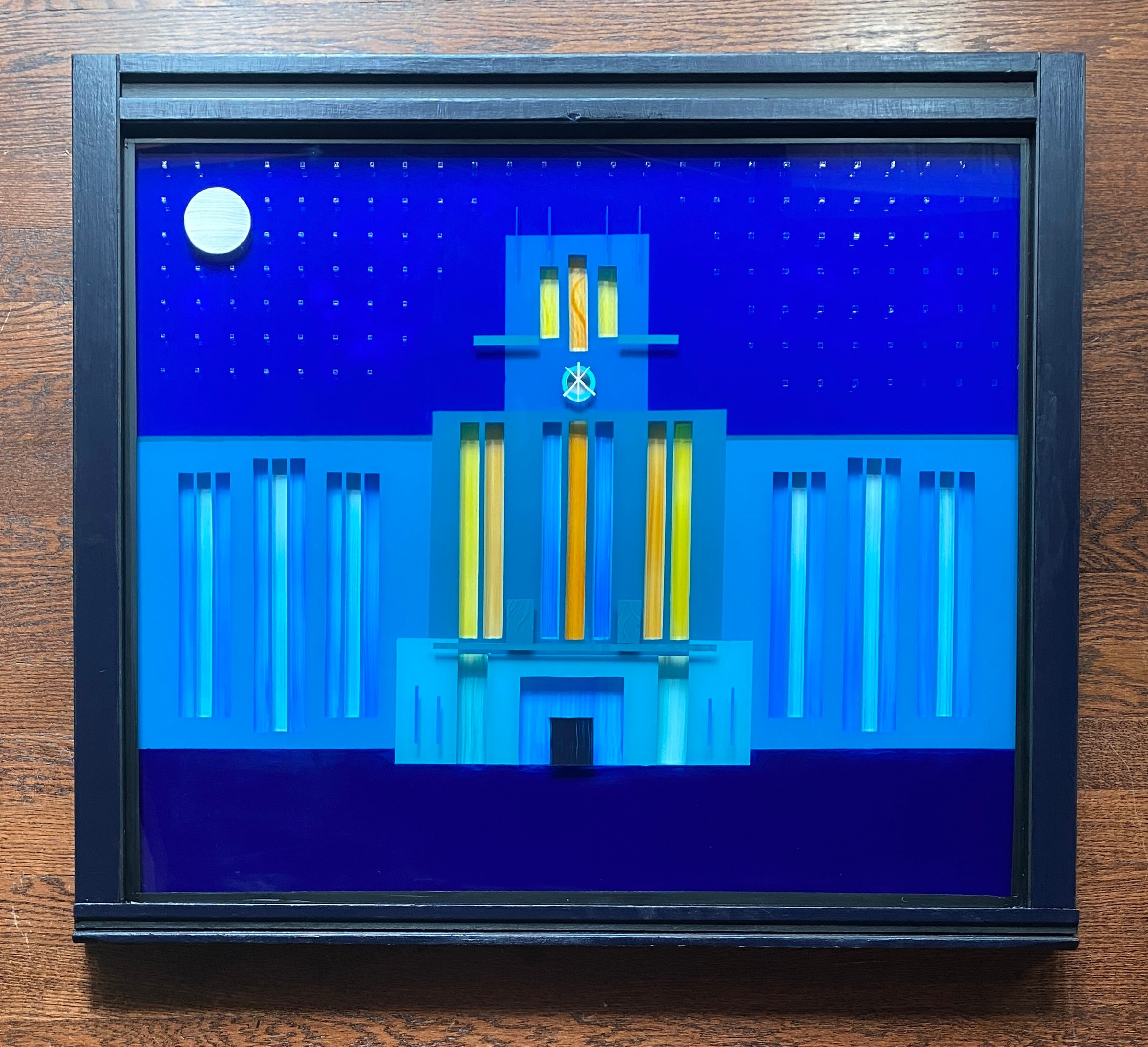
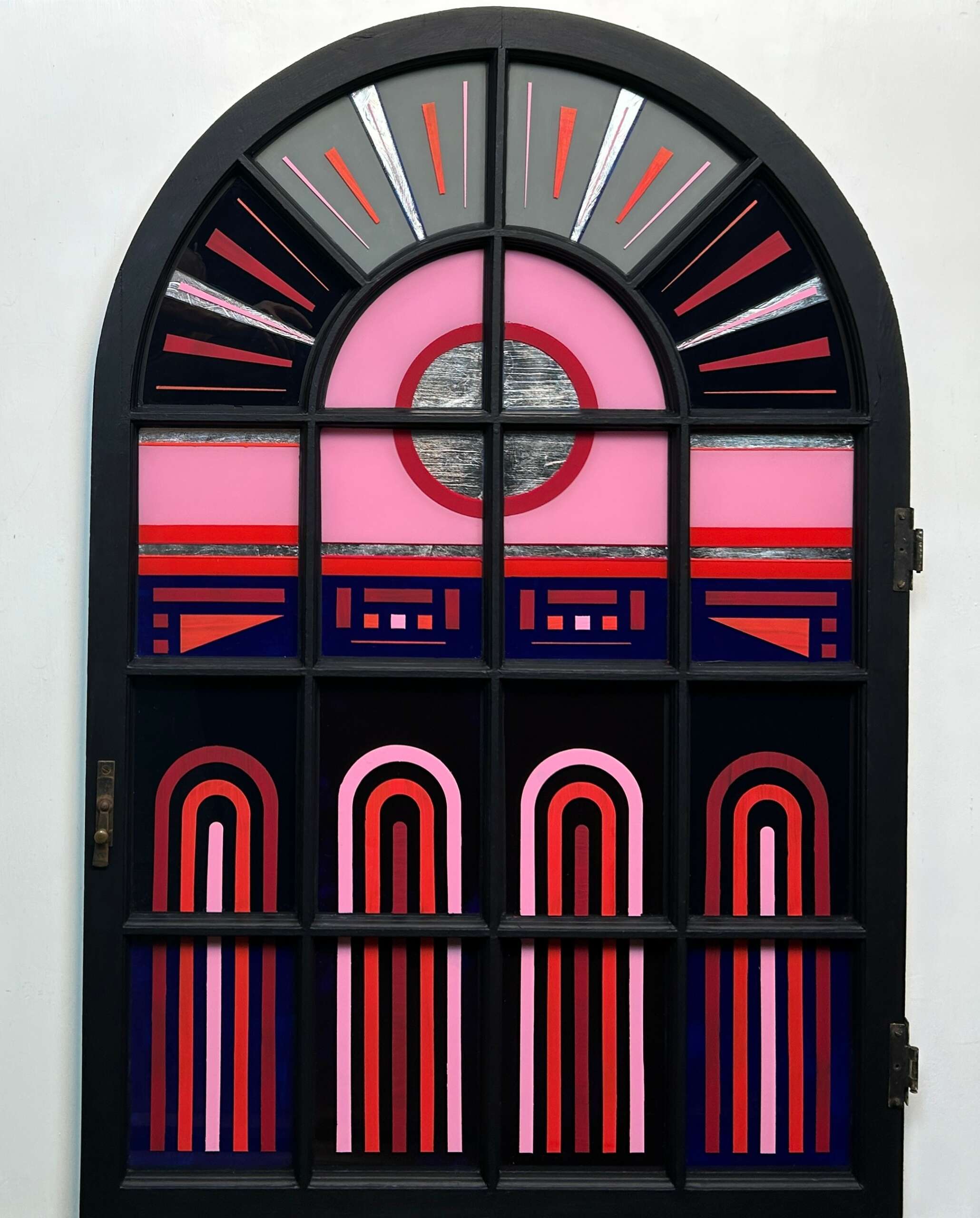
How can we best help foster a strong, supportive environment for artists and creatives?
Buy every piece of art they create? I really wish there was a better societal system in place to support artists and creatives financially, but unfortunately I don’t think it’s something our society values as much as it should. So many artists I know with work much better than mine struggle with making sales and paying fees to enter shows – its a real rarity to find any that are able to make a living just on their true creative work alone.
This is a problem I’ve tried to address when I have any opportunity. Juried shows, for example, are not inexpensive to enter and the fees add up if you’re exhibiting regularly. I don’t want my work on the wall because I was among those who had $30 to pay a fee, I want it up because it was selected from the best work out there – but I also understand the reality that sometimes arts organizations need those fees in order to operate so its not a simple issue.
I actually applied for and received a grant this last year from the Connecticut Office of the Arts to put on a juried show that I could not participate in, by design. It was to focus on lower income artists who would normally have a hard time paying for jury fees and I was able to enlist a high profile juror from a local museum and put on an eight week show of some really amazing work. I really loved that multiple artists told me it was the first time they had been in a juried gallery show. I definitely wish there was more of a system to alleviate this issue.
Another thing that I think greatly helps creatives is a supportive community. I find that interacting with other artists, talking about things that only we encounter, gives me energy for exhibition and to create new work. Two years ago, I went to a local gallery (Gallery 66 in New Britain) with the idea of having a monthly artist discussion. Just a place where you know you can come and talk to someone else who is working in the arts – share opportunities or just practical advice. I create an agenda each month, which is where my list of Connecticut opportunities on my website came from, to share with everyone, but its been great. At first it was two or three people, but a recent meeting had well over twenty five artists coming together and helping each other with advice or tips on places to show, even just general emotional support for something they’re encountering. I’ve found through those discussions that a lot of artists are solitary, working alone, and really come to appreciate it when there is an environment where they can meet up with others passionate about the same things.
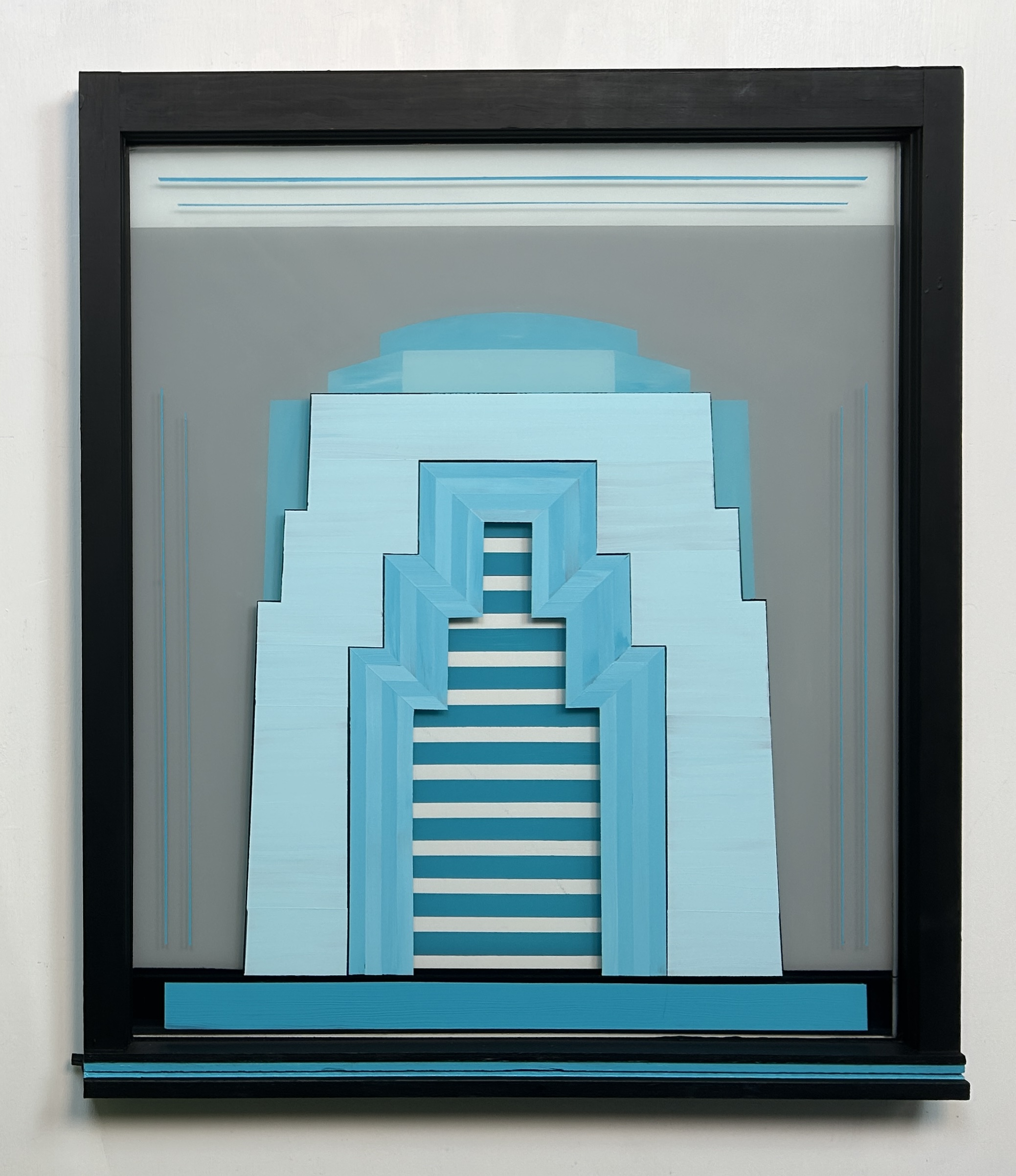
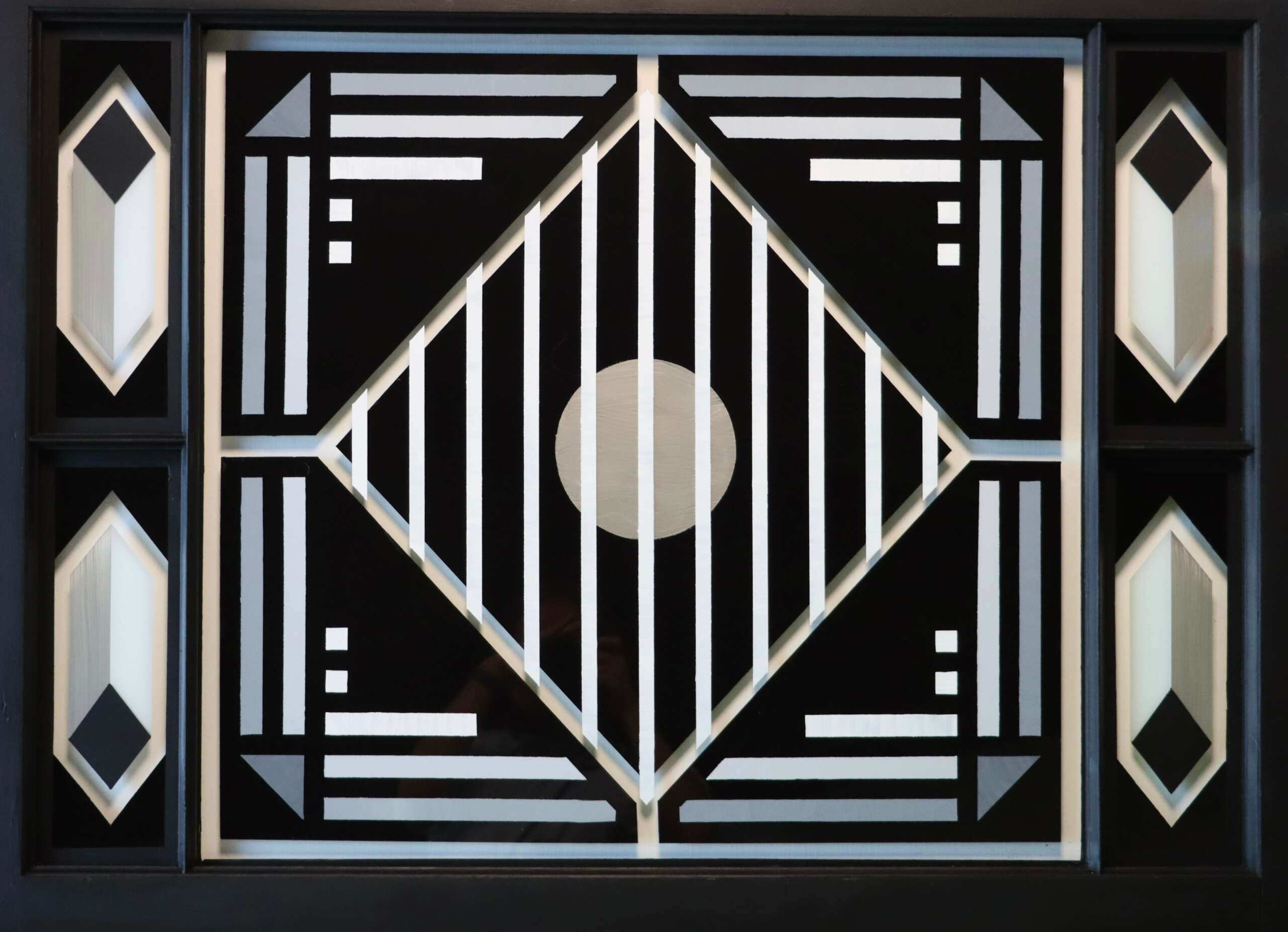
Are there any resources you wish you knew about earlier in your creative journey?
Can I list out specific brands of tape and types of razor blades? Honestly, I wish I would have known how big the art world was when I was first starting out. I started out with just a few shows at local art leagues, but the more I looked and explored the more opportunities I found.
If you look at my website, I actually keep a list of any exhibition opportunities I know about in Connecticut up to date. I wish I would have had a resource like that available when I first started, but beyond that I really wish I had just known the wide variety of exhibition opportunities and the value of all of the different engagement you get from those.
In and around Connecticut, I have been in over forty shows a year for the last two years and I don’t expect to slow down. I know some artists that only show in galleries and juried shows, but I find that I get something different from all kinds of opportunities. Local libraries, town and county fairs, displays in vacant buildings – I really enjoy any opportunity to get my work out there. I have a coffee shop where my work has been up and rotating for over a year and I feel like every time I go there I end up having another positive interaction about my work.
Though its a lot of work to set up and take down windows everywhere, it’s like that old quote from Vonnegut about why he would send his own correspondence – its about the coffee shop I stop at on the way to drop off work, the conversation I have with another participating artist, the town I stop at on the way I’d never visit otherwise, someone who starts talking to me when they see me carrying a window down the street, these are all things I’d be missing if I didn’t exhibit as often.
Contact Info:
- Website: https://www.eddiehallart.com
- Instagram: https://www.instagram.com/eddiehallart
- Facebook: https://www.facebook.com/eddiehallart
